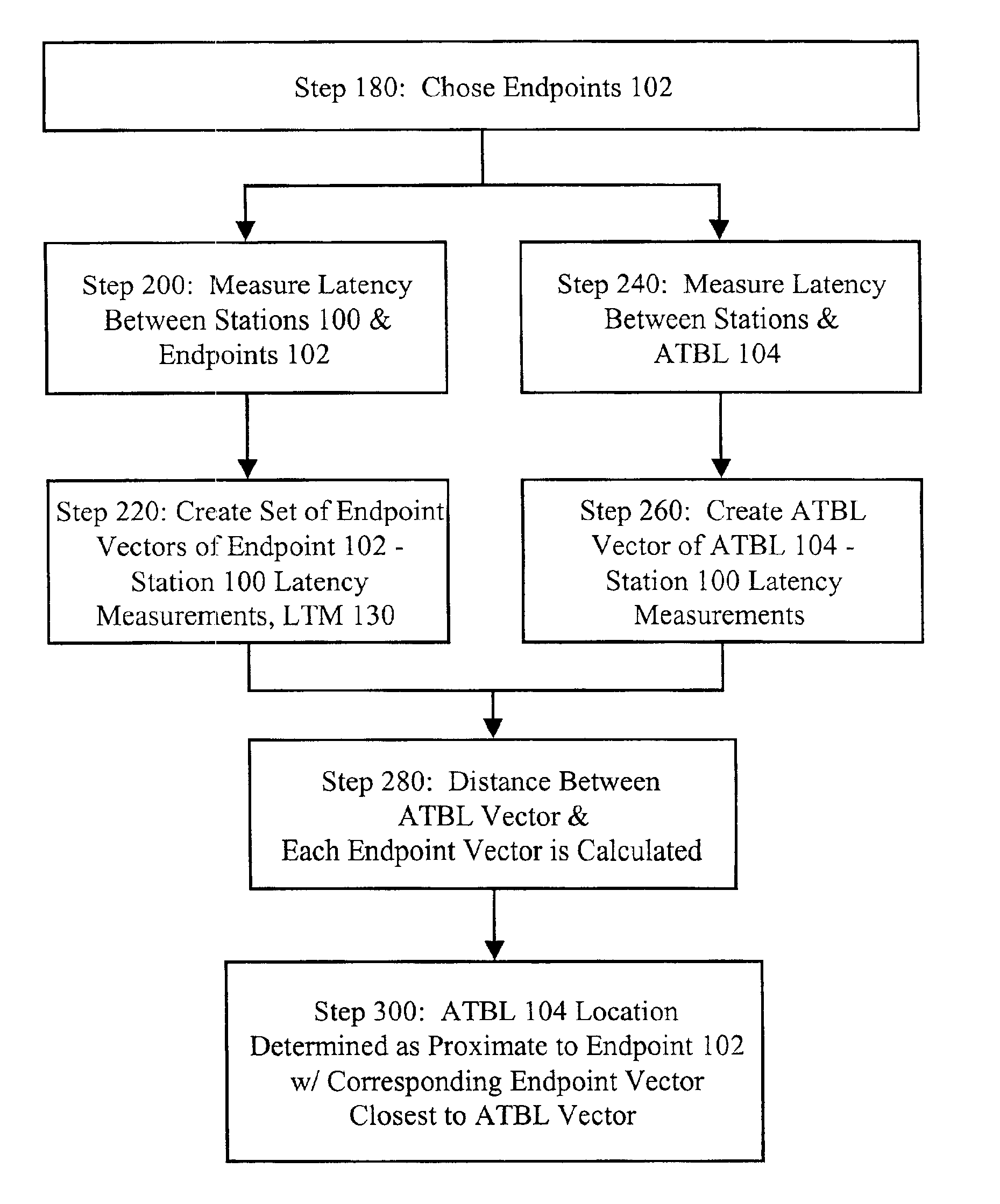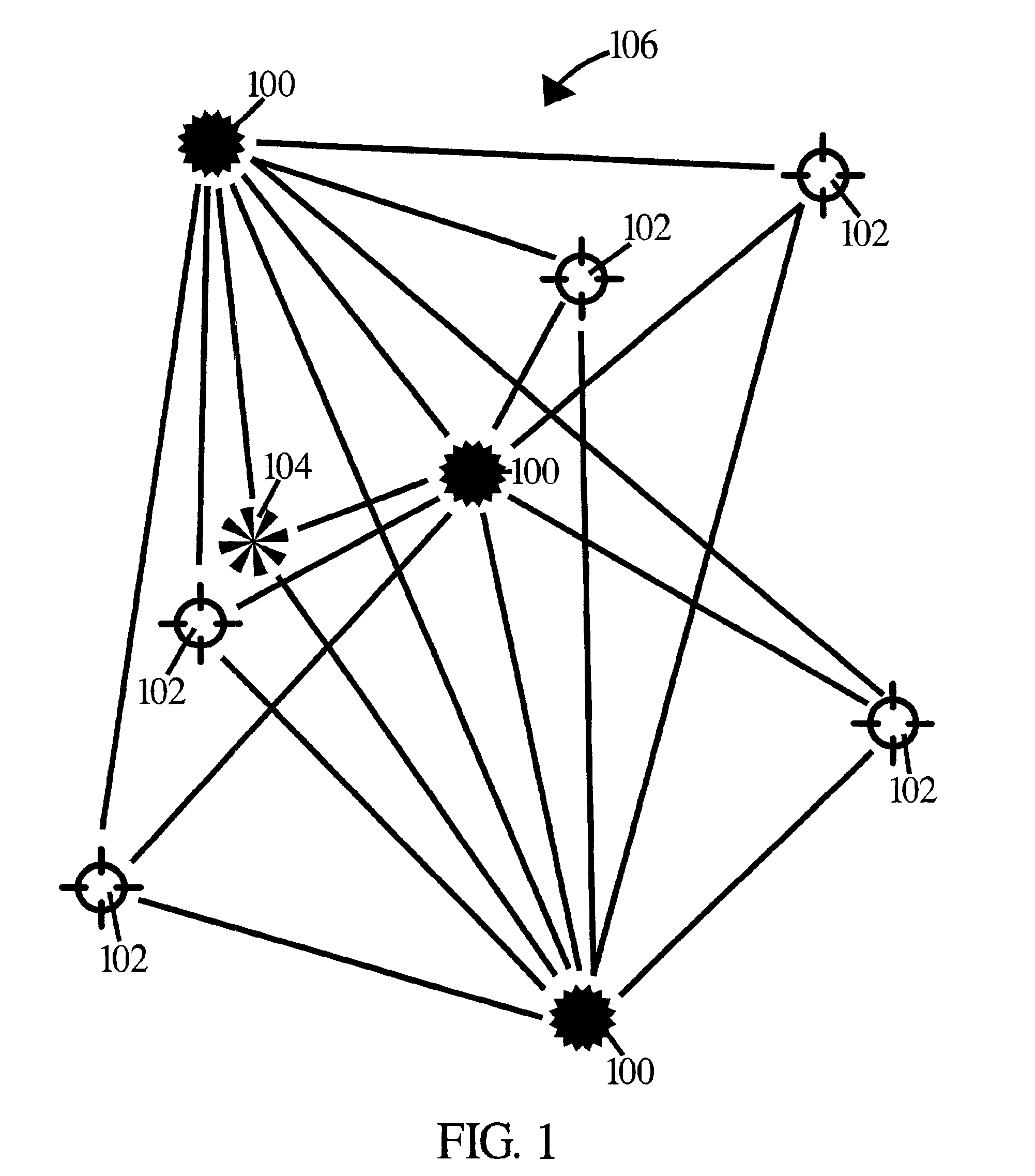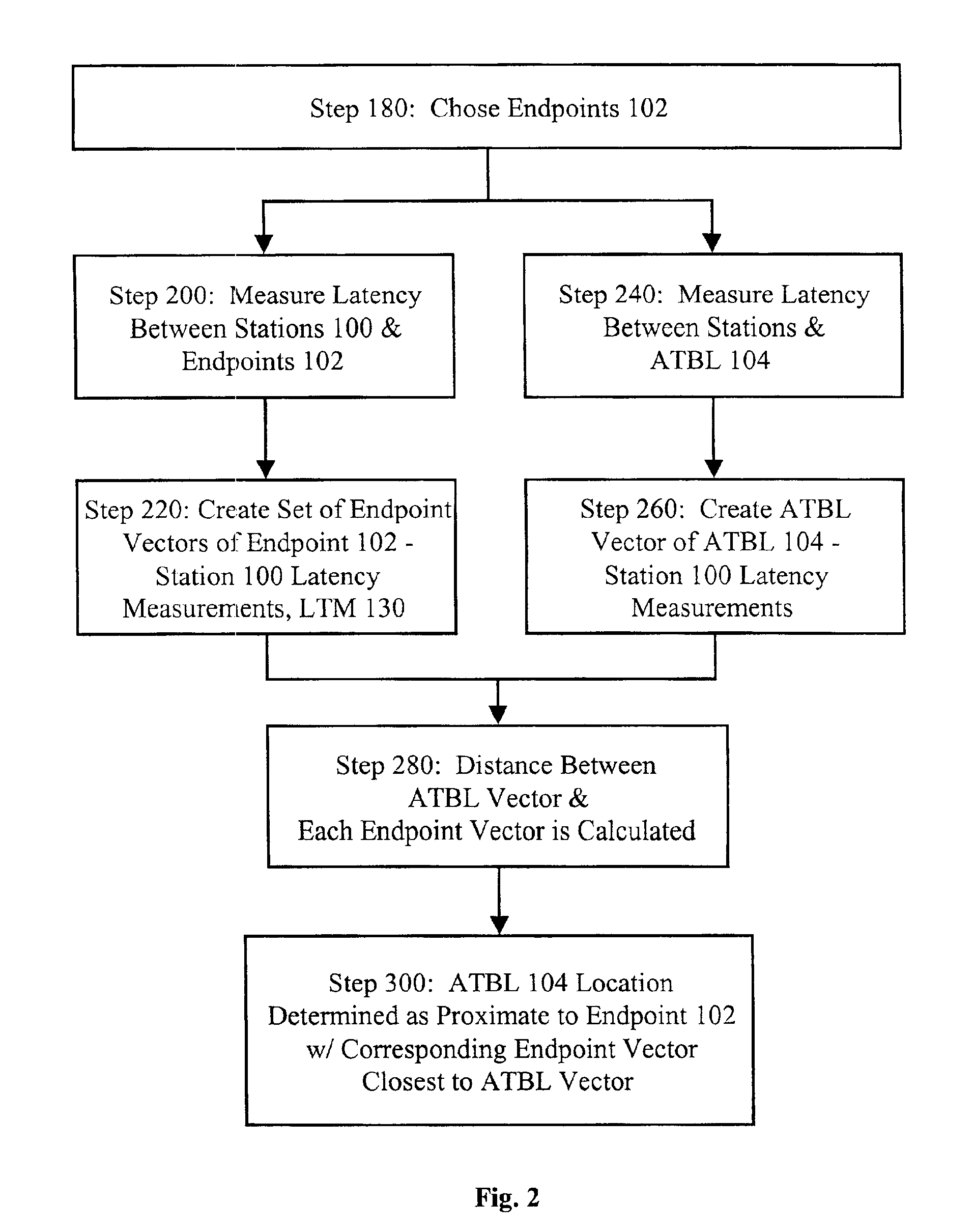Method for geolocating logical network addresses
a network address and logical network technology, applied in the field of networked communication, can solve the problems of data propagation through non-constant routing, data to effectively propagate at a non-constant speed, and the geolocation tenets that support these geolocation methodologies are not applicable to the network environment, so as to achieve the effect of increasing the density of endpoints and enhancing the potential geolocation resolution
- Summary
- Abstract
- Description
- Claims
- Application Information
AI Technical Summary
Benefits of technology
Problems solved by technology
Method used
Image
Examples
Embodiment Construction
[0024]In order to geolocate an address to be located (ATBL) 104 on a non-linear electronically switched network 106 as depicted in FIG. 1 the signaling propagation characteristics of the network 106 must be measured. Signaling propagation across a network is measured as a latency. In the instant methodology this latency will be measured as the time it takes for a message to go from a station 100 to some specific addressed equipment, producing an immediate automated response, and back to the originating station 100. That specific addressed equipment can be either an endpoint 102, an ATBL 104, or another station 100. The aggregate of this round-trip latency characteristic for many stations 100, each measuring latency to many endpoints 102, is a latency topology map 130 (See FIG. 3) which characterizes the network latency among network stations 100 and endpoints 102.
[0025]Data moves through a network 106 at different rates depending on the amount of traffic being handled, the physical ...
PUM
 Login to View More
Login to View More Abstract
Description
Claims
Application Information
 Login to View More
Login to View More - R&D
- Intellectual Property
- Life Sciences
- Materials
- Tech Scout
- Unparalleled Data Quality
- Higher Quality Content
- 60% Fewer Hallucinations
Browse by: Latest US Patents, China's latest patents, Technical Efficacy Thesaurus, Application Domain, Technology Topic, Popular Technical Reports.
© 2025 PatSnap. All rights reserved.Legal|Privacy policy|Modern Slavery Act Transparency Statement|Sitemap|About US| Contact US: help@patsnap.com



